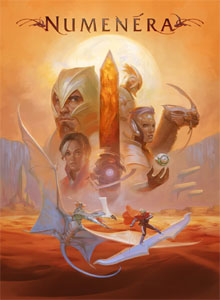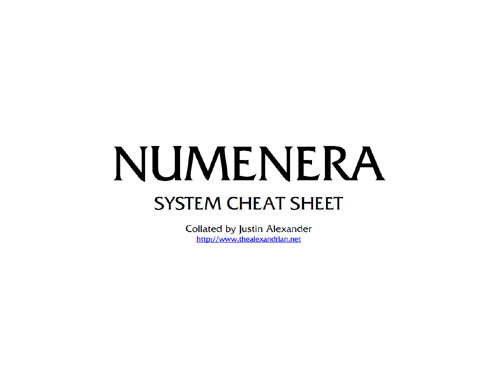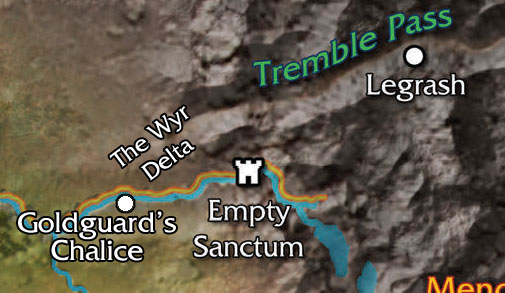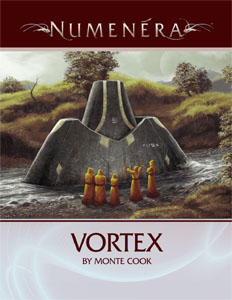 Many moons ago I wrote D&D: Calibrating Your Expectations: The point of the article was to re-orient your expectations regarding the level of power being modeled by mid- and high-level D&D characters. (If you think “Conan” when you think about a 15th level character, you’re doing it wrong. Think Hercules in his most powerful persona as a full-blooded demigod.) The article had a few unexpected consequences, but by and large it seems to have helped a lot of people avoid or resolve the dissonance they once experienced between the mechanics of the game and the fantasy they were creating or emulating. We all stopped fighting the system and started embracing all the awesome stuff it was capable of.
Many moons ago I wrote D&D: Calibrating Your Expectations: The point of the article was to re-orient your expectations regarding the level of power being modeled by mid- and high-level D&D characters. (If you think “Conan” when you think about a 15th level character, you’re doing it wrong. Think Hercules in his most powerful persona as a full-blooded demigod.) The article had a few unexpected consequences, but by and large it seems to have helped a lot of people avoid or resolve the dissonance they once experienced between the mechanics of the game and the fantasy they were creating or emulating. We all stopped fighting the system and started embracing all the awesome stuff it was capable of.
Brandon Perry shot me an e-mail recently asking me to give Numenera the same treatment. It sounded like a really fascinating idea for a blog post, so I’m going to take a crack at it. Before I do, though, I want to offer a little bit of a proviso: When I wrote D&D: Calibrating Your Expectations I had nearly 20 years of experience with the game and had played or run hundreds (possibly thousands) of sessions. Although I’ve been playing Numenera since it was released last August, my experience with the game is obviously extremely truncated by comparison (consisting of a couple dozen sessions). So there’s going to be a little more armchair theorizing this time around, with all the risks that sort of thing entails. Take what I have to say with a grain of salt and keep testing it against your actual experience at the gaming table, but hopefully you’ll find some value in what I have to say here.
STATS vs. EFFORT vs. EDGE
Let’s begin with the core attributes of your character in Numenera. These seem to be frequently misunderstood, in no small part because they defy the expectations formed by the norm of other roleplaying games.
For those unfamiliar with it, the basic mechanic of Numenera works like this: The GM sets a difficulty between 0 (Routine) and 10 (Impossible). This number is multiplied by 3 in order to arrive at a target number (between 0 and 30). The player rolls 1d20; if they roll equal to or higher than the target number, they succeed.
For example, if you wanted to climb a Difficult (4) cliff, you’d have to roll 12 or higher on 1d20 (because 4 x 3 = 12).
In practice, however, the difficulty will be modified before the dice are rolled: Each relevant asset or skill the character has will reduce the difficulty by 1. So if a character who was skilled at climbing (-1) and also had their climbing kit with them (-1 for the asset) was facing a Difficult cliff, the effective difficulty would only be 2 and they’d have to roll a 6 or higher on 1d20 to reach the top.
Each PC has three stats: Might, Speed, and Intellect. Your score in each stat forms a pool and you can spend points from your pool to activate special abilities and also exert effort. When you exert Effort, you spend 3 points from the relevant pool to decrease the difficulty of the task by 1.
So, looking at that Difficult cliff again: You start with difficulty 4, subtract 1 for being skilled in climbing, subtract 1 for having the asset of a climbing kit, and then you could exert effort (spending 3 Might points) to subtract 1 again. (Now the cliff has an effective difficulty of 1 and you only have to roll 3 or higher on 1d20.) As your character advances, you’ll be able to exert multiple levels of effort simultaneously (further reducing the difficulty of a task).
Now, this is the point where most people get confused: Say you’ve got one character with Might 9 and another character with Might 14. Which character is stronger?
Neither.
Primed by other roleplaying games you probably have a natural instinct to think the Might 14 character is stronger. But he’s not. He simply has more endurance when it comes to performing difficult Might-related tasks. (Think about it: If both characters have the same skills and assets, then they’re facing the same probability of success. They are both equally capable of applying effort to any given Might roll. The only difference is that one of them will be able to apply effort to more Might rolls: He’ll win in a competition of endurance, but it’s a 50-50 split for any individual feat of strength.)
So stat pools are not the same thing as a typical RPG ability score. To find something like those in Numenera, you need to look at Edge.
In addition to having a pool in each stat, characters in Numenera also have an edge in the stat. For example, a beginning glaive has Might Edge 1, Speed Edge 1, and Intellect Edge 0. You use edge to reduce the cost of any associated pool expenditures. (So, for example, if you had a Might Edge of 1, you would spend 2 points to apply Effort to a Might roll instead of 3 points.) What this mechanic means is that a character with a Might Edge of 1 is stronger than a character with Might Edge of 0.
If this distinction is confusing you, think of it like this: When you get a Might Edge of 3, you can now apply Effort for free. That means you are just automatically 15% more likely to succeed at anything you do that’s related to Might. (Which means that you’re stronger.)
It should be noted that the range of potential Edges in Numenera is fairly small: The theoretical maximum is 0 to 6, and 0 to 4 is probably more likely in actual practice. (And you’ll only see those ranges with higher tier characters.) So, at most, characters are going to vary 20-30% based on their “ability scores”.
EFFORT AS CALIBRATOR
The difficulty table in Numenera does a pretty good job of calibrating your expectations for a normal person:
| GUIDANCE | |||
|---|---|---|---|
| Anyone can do this basically every time | |||
| Most people can do this most of the time | |||
| Typical task requiring focus, but most people can usually do this | |||
| Requires full attention, most people have a 50/50 chance to succeed | |||
| Trained people have a 50/50 chance to succeed | |||
| Even trained people often fail | |||
| Normal people almost never succeed | |||
| Impossible without skills or great effort | |||
| A task worthy of tales told for years afterward | |||
| A task worthy of legends that last for lifetimes | |||
| A task that normal humans couldn't consider (but doesn't break the laws of physics) |
All the guidelines there pretty clearly flow from the underlying math (which is straightforward because the system is just 1d20 vs. the target number): Routine tasks can be achieved every time (unless adverse circumstances push the difficulty up) because you’ll always roll higher than 0 on a d20. Difficult tasks have a 50/50 chance for trained characters because the skill drops the difficultly level by 1 (and math does the rest).
The key breakpoint on the chart is between Intimidating tasks and Formidable tasks, because that’s the point where you need to be either skilled or spend effort to have any chance of success (and the chart says exactly that).
Where I quibble with the chart a little bit is the Heroic level: It claims that these are “tasks worthy of tales told for years afterward”. But a character with skill specialization (-2 difficulty) expending a couple levels of effort (-2 difficulty) would actually have a 45% chance of success. That’s definitely impressive and probably the sort of thing you’d tell your friends about for a couple of days if you saw somebody do it, but it’s probably not going to be talked about for years.
Long story short: I’d bump the descriptions of Heroic, Immortal, and Impossible actions all up a slot or two.
The point, though, is that if you’re looking for the upper limit of what a character is capable of, then the maximum level of effort they can expend (which is generally equal to their tier) is a good indicator.
In general, the absolute best an unskilled character can do is difficulty 6 + their effort. Skills top out at specialized (-2 difficulty), so highly skilled characters will top out at difficulty 8 + their effort. In proper conditions and with proper equipment (i.e., with a couple of assets under their belt), it actually ends up being 10 + their effort.
(That, coincidentally, means that even beginning characters can line things up to make difficulty 10 tasks achievable. Which is another reason why the concept of “Impossible” should probably be bumped up a level or two on that table.)
EDGE AS CALIBRATOR
What you also want to calibrate, however, is the other end of your scale: What do your characters consider routine? (In fact, I generally find this a lot more useful in terms of really conceptualizing what life is like for a particular character.)
For that, we want to look at edge.
In a purely theoretical sense, Edge 3 and Edge 5 are the magic numbers where the first and second levels of effort become completely free and the difficulty for any related task is usually going to automatically drop.
In actual practice, however, I’ve found that once effort only costs 1 pool point the threshold for ubiquitous “impulse purchasing” seems to be reached: Players will start liberally using effort on pretty much every die roll (and they can generally get away with it). That means that the real thresholds to look at are Edge 2 and Edge 4.
In other words, an untrained character will consider tasks with a difficulty equal to one-half their Edge routine. (Of course, you should also adjust this difficulty for their skills and assets.)
These numbers don’t hold up if your Edge radically outpaces your maximum Effort (it doesn’t matter how cheap it is to spend the points if you’re not allowed to spend the points). This is theoretically possible due to the flexible advancement mechanics, but incredibly unlikely in practice.
SKILLS AND TOUCHSTONES
One thing to get a feel for in Numenera is that most of the ratings in the system cover a fairly broad range. (This is deliberate. Phrases like “precision isn’t that important” and “precision isn’t necessary” are sprinkled liberally throughout the rulebook.) This is also true when it comes to skills, with the system only distinguishing between three levels of training – untrained, trained, and specialized. Each of those skill levels must be covering a lot of territory and, upon closer inspection, it’s also notable that “untrained” is something of a misnomer because even untrained characters can succeed on challenging and even intimidating tasks with a fair amount of regularity if they apply a little effort and preparation.
PCs will only get a handful of skills in Numenera, but this isn’t because they’re ignorant louts: The game is actually assuming that characters have a very broad and pervasive competency across the board and only highlights the stuff they’re really, really good at. (This also fits the other elements of the system: As characters increase in tier their Effort improves across the board, which means their maximum possible performance improves in everything. Edge focuses the regularity of their performance and skills refine that focus even further.)
In trying to really peg what skill performance means in Numenera, however, the generalized flexibility of the system occludes things a bit. Unlike D&D, Numenera doesn’t give a lot of difficulty guidelines outside of the primary difficulty table described above. In practical terms, we’re basically limited to crafting items, climbing, and remembering/understanding particular pieces of knowledge.
Limited although they may be, I will use these guidelines as touchstones in the calibration discussions. If you want to see the tabular breakdowns for these difficulties, you can find them on my Numenera system cheat sheet.















